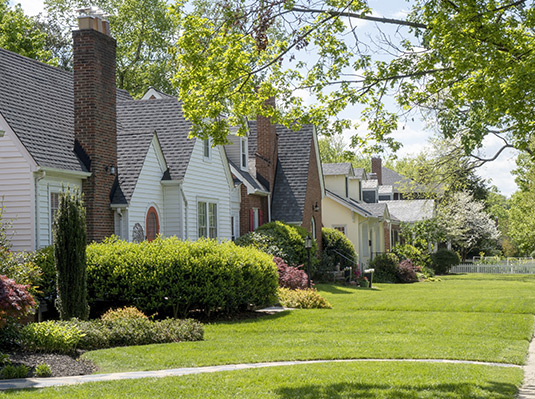
Depending on who you ask or where you look these numbers can be all over the place. That begs the question, “What’s the difference, and which one is right”. We’ll be helping break down the different ways to determine valuing your home from the insurance perspective to make sure you feel confident that your home is properly protected.
What is Market Value?
We’ll start by discussing what’s referred to as the Market Value of your home. This is going to be the most common value that consumers use when talking about their home’s value, but that doesn’t mean it’s the best to use for insurance. To break it down simply, the Market Value of your home would be the value if you were to sell your house on the current market. Likewise, if you are purchasing a home, Market Value would be synonymous with the purchase price you are buying the home for. If you were to ask people that work in the home buying industry such as realtors, mortgage loan officers, or appraisers, they’ll likely use this number whenever talking about the value of a home. Market Value can be influenced by several things:
- Supply and Demand - How many houses are available in your area? When companies relocate, the housing market can boom in certain areas driving up the value.
- Location - Where your house is located in town can also make a big impact on market value. Being in a good school district, proximity to local attractions, or ease of access to major highways can also affect value.
Let’s switch over and have a conversation about what Replacement Cost means when discussing a home’s value. It sounds straightforward enough - Replacement Cost sounds like it means: I get my home replaced if something happens, but why is that number different from Market Value? Does that mean you’re getting less than you paid for your home if something were to happen? Of course not. Replacement Cost is determined by how much it would cost to rebuild your home back to the way it was before a loss. It’s not affected by all the same things that go into Market Value:
- Construction Materials - The materials used in building your home play the biggest part in valuing the Replacement Cost calculation of your home. If the exterior is brick vs wood, vinyl vs granite countertops or even wood vs carpet flooring all plays a factor in the rebuild costs.
- Supply and Demand - This is still a big factor but now it’s taking into consideration the supply and demand of building materials and labor in your area.
- Size of your home - The bigger your home is, the more it’s going to cost to rebuild. That’s pretty straightforward. Even things such as 1 or 2 stories, if your garage is attached or built-in, even foundation type will also play a factor in determining the replacement cost.
Real World Scenarios
Let’s break down a few scenarios to help understand the difference.
Scenario 1: I purchased my home for $500,000 but you’re telling me I only need to insure it for $400,000? What’s the difference?
In this case, having your home insured for less than you paid for it isn’t uncommon at all. That doesn’t mean that you’re automatically underinsured. What was one of the big factors we discussed that comes into replacement cost? Location, Location, Location! Where your home is located is a huge factor in how much you paid for the home, but you won’t see a big effect on the Replacement Cost because of it. For example, if you take a house in the nicest neighborhood in your city and move it somewhere else the market value is going to drop but the home itself is still made of the same materials so the cost to build it would remain very similar. As a result, the difference in Market Value has been impacted by the value of the land your home sits on while the Replacement Cost has stayed consistent. That helps account for the $100,000 difference in this scenario for the difference between Replacement Cost and Market Value. If something were to happen to your home, the value of your land is still there and also helps explain why Replacement and Market Value don’t always match up.
Scenario 2: I’ve been in my house for 10 years and I paid $200,000 but now you’re telling me you want to insure it for $300,000? That’s way too much!
This scenario is flipped compared to the first example. How does insuring your home for more than you initially paid make sense? If you’ve been in your home for a few years or if it’s older, it could be a few things. One of those would be depreciation - your insurance company is going to be looking at what the cost would be to build new compared to the value your home may have if it’s currently 40 years old. In addition to that, if you do have a newer home already where depreciation hasn’t set in as much, most homes are built as part of the neighborhood where many homes are going up at the same time. Because of that, builders are getting deals on bulk supplies allowing them to build multiple homes at the same time cheaper than just having to rebuild only your home after a claim.
Each insurance company has what they refer to as an RCE or Replacement Cost Estimator that helps determine your home’s rebuild value. We recommend having a conversation with a licensed insurance agent to review your home’s Replacement Cost value at renewal to make sure your coverage has kept up with costs of inflation and taken into account any home improvements you’ve made over the year as well.
The contents of this article are for informational purposes only. You should not act or refrain from acting based on this information without first consulting a Goosehead licensed agent at [email protected]. We disclaim all liability for actions taken or not taken by you based on the contents of this article which is provided "as is." Goosehead makes no representation that this content is error-free.


